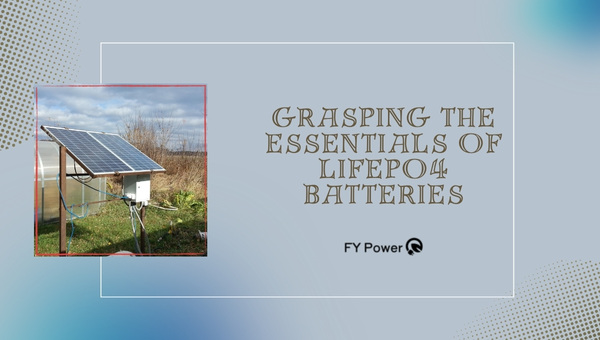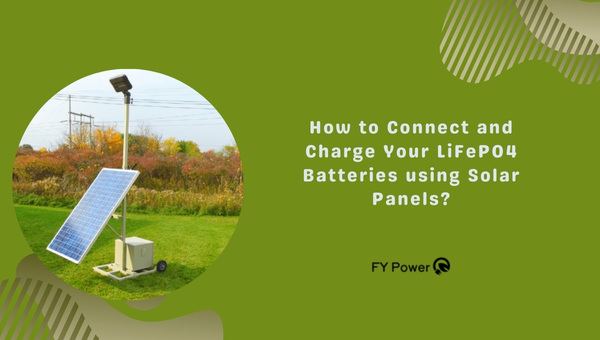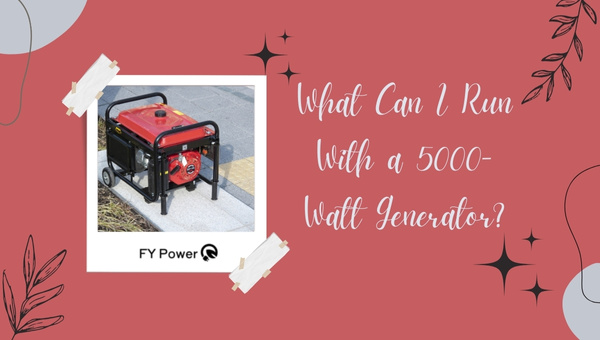Are you struggling to keep your renewable energy system running on the sunniest of days? Discover how I cracked the code to an efficient solar setup with the whisper-quiet operation—thanks to LiFePO4 batteries. If you’re keen on maximum energy storage and long-term reliability, stick around. This could be your golden ticket to optimizing solar power!
When it comes to juicing up your LiFePO4 batteries using the power of the sun, it’s all about letting those rays do their magic. Make sure your solar panels are getting a full day’s worth of sunlight—no skimping! Angle them just right and pair them with a proper charge controller; this isn’t rocket science, but getting it spot-on will have you strutting like a peacock while you watch that battery level climb steadily.
What You’re Sure to Learn Here:
- Slice through confusion with simple charging steps
- Unleash the full potential of your solar setup.
- Peace-of-mind maintenance for uninterrupted power
- Smart tips for top-notch battery health
Grasping the Essentials of LiFePO4 Batteries
Let’s dive into something cool, and I’m talking about LiFePO4 batteries. These aren’t your average energizers; they are advanced batteries that do an awesome job, especially when teamed up with solar panels. Let me unpack all about them for you.

The Concept of LiFePO4 Batteries Explained
Let me tell you a bit about LiFePO4 batteries. These are not your regular batteries. LiFePO4 stands for Lithium Iron Phosphate, and these kinds of batteries come with a bunch of cool things that make them perfect for use with sunlight power systems like solar panels.
First up, the lifespan is a big deal. LiFePO4 batteries can go through more charge and discharge cycles than other types, which means they last longer. Think years and years of use without having to replace them!
Safety is another key point. They are made in a way that they don’t catch fire or explode easily – which, trust me, is super important when it comes to storing energy.
Then there’s something called ‘depth of discharge.’ This just means how much you can use the stored power without harming the battery’s health. These batteries let you go deep in using power without worrying too much about it.
Here’s what makes them special:
- Long life: Lasts many, many charge cycles.
- Safe: Not likely to cause fires or explosions.
- Depth of Discharge: Use more energy safely.
They’re pretty great for those who care about using clean energy and want stuff that lasts long while being kind to our planet!
Why Choose LiFePO4 Batteries for Solar Power Systems?
Now, let me break down why these LiFePO4 batteries make so much sense when paired with solar power setups. You see when we talk about renewable energy storage – like saving sunlight energy – we’re looking at keeping this clean energy safe until we need it.
Solar setups produce power during the day when there is sunlight, but what happens at night? That’s where these handy dandy LiFePO4 batteries come in to save the day (literally). They store this precious sun juice so you can have electricity even when Mr. Sun calls it quits for the evening.
And because these babies don’t get all flustered (that means they don’t overheat) when charged by solar panels, unlike some other battery types might do – choosing them becomes a no-brainer! They line up perfectly with what solar systems need:
- Energy Storage: Keep your sun juice stored safely.
- Efficiency: Get more out of every ray of sunlight.
- Harmony with Nature: Align well with clean, eco-friendly solar setups.
They’re like peanut butter and jelly; they simply go really well together! Using renewable resources matters for keeping our earth happy and healthy, so matching this green tech makes sense on all fronts.
By going with these robust little units in your solar installments, you’re making sure that not only do you get efficient storage but also contribute towards sustainability goals, which feels downright good, too!
Also Read: What will a 3000-Watt Generator Run
Key Components to Enable Charging of LiFePO4 Batteries Using Solar Panels
Nothing feels better than using the sun to charge batteries. It’s clean and saves on energy bills. LiFePO4 batteries are perfect for storing that solar energy. Now, let’s dive into how to charge these batteries with solar panels, starting with the types of panels and how they can work together.
Specification and Setup of Solar Panels
Charging LiFePO4 batteries with solar panels is a smart move. It uses the sun’s power, which is free and clean. But to make it work right, you need the best setup. Let’s talk about solar panels first.
Solar panels come in different types:
- Monocrystalline: These are high-efficiency ones and do well even when sunlight is not that strong.
- Polycrystalline: A bit less efficient but cost-effective.
- Thin-film: These are lightweight and flexible but not as long-lasting or efficient.
Each type has its plus points, depending on what you want:
- If you need more power and have less space, go for monocrystalline.
- If cost is a big deal and you have more room, polycrystalline could be your choice.
- If your setup needs to bend or move around often, thin film can be handy.
Now, when linking solar panels to charge LiFePO4 batteries, think of these things:
- Panel Voltage: Choose one that matches the charging voltage needs of your battery.
- Wattage Rating: Get enough watts from your panel to fill up your battery in good time.
Putting them all together right means clear days will turn into energy for later. And LiFePO4 batteries? They’re great at holding onto that energy for when you really need it.
The Role of Battery Charge Controllers
Next up are battery charge controllers. These little boxes are key players in the charging game. Why? They watch over the power moving between your solar panels and the LiFePO4 batteries.
Here’s what they do:
- Prevent Overcharging: By cutting off power when the battery is full, they save it from damage.
- Block Reverse Current: At night, they stop batteries from sending energy back up to the solar panel.
- Optimize Charge Rate: Some get smart about how fast to fill up the battery without hurting its lifespan.
And there’s more than one kind:
- PWM (Pulse Width Modulation): This straightforward controller is like an on-off switch that flicks rapidly.
- MPPT (Maximum Power Point Tracking): This one’s super clever – it finds out just how much juice can flow without wasting any power or overdoing it on sunny days.
If someone has their mind set on keeping their LiFePO4 batteries happy, choosing an MPPT controller designed for them might be a clever idea because they’re made to work better together with modern-day solar setups.
So get your controllers sorted – don’t let them be an afterthought – ’cause they’re like referees making sure everything plays fair in the field of charging!
Also Read: What Will a 10000 Watt Generator Run?
How to Connect and Charge Your LiFePO4 Batteries Using Solar Panels?
Charging LiFePO4 batteries with solar panels is a smart move. It’s good for the planet and good for your wallet in the long run. I will take you through this process step by step, so stick with me, and we’ll get through it together!

Procurement & Positioning Your Solar Panels
Getting the right solar panels and putting them in the best spot is key to making the most out of the sun’s power.
Here’s what you need to do:
- Choose Right: Pick solar panels that match your battery’s specs. Look for how much power they make and compare that with what your LiFePO4 battery needs.
- Check Quality: Go for quality brands to ensure your investment lasts longer.
- Face The Sun: To grab as much sunlight as possible, your panels should face where the sun tracks across the sky – usually south if you’re in the Northern Hemisphere.
- Tilt Angle Matters: The angle of tilt can up your solar panel’s game big time! Get this angle matched with your latitude.
By taking these steps, you set yourself up for efficient solar energy storage.
Setting Up Your Battery Charge Controller
Picking out and setting up a charge controller isn’t something you do without thought; it’s there to make sure everything charges smoothly.
- Select Wisely: Pick a controller made for LiFePO4 batteries; they need special care.
- Follow Instructions: Each controller has its guide; read it carefully so you know how it hooks up.
- Program Properly: Controllers come smack full of settings – get those dialed in according to what’s best for your battery type.
Done right, this ensures battery charging optimization without any harm coming to those precious cells.
Connecting your Solar Panel to the Controller
This part is about making safe connections between the panel and the controller:
- Open Circuit Voltage: First off, check that voltage out from panels when there’s no load – it can’t be too high now!
- Plus-to-plus Minus-to-minus: Now get those cables hooked up – the positive terminal from solar goes to positive on the controller, and the same goes with the negative side.
- Secure Connections: Ensure all wires are snug so there aren’t any sparks or loose bits throwing a wrench into things.
Safety should always be a top priority when linking these electric parts together.
Fitting The Controller To Your Battery Bank
Last but not least, we’re at linking controllers with that battery bank of yours:
- Really Tight: Make sure connection spots on both ends are super clean, then screw ’em tight – really tight so nothing wiggles loose over time or causes trouble.
- Pay Attention To Polarity: Never mix them up! The positive wire goes on a positive terminal; otherwise, things could get risky quickly!
- Insert Fuse For Safety Measure: Having an inline fuse adds a layer of safety just in case something ever did go sideways power-wise.
If done all wrong, not only would efficiency drop like a rock, but we could talk about damaged equipment or worse–fire hazards! So pay attention!
Making good use of renewable energy systems like these means thinking through each step carefully, but once done – oh boy! You’ve got yourself a smooth-running system keeping those LiFePO4 batteries topped off with no problem under that big old sun above us!
Also Read: How to easily tune up your generator?
Essential Tips For Maintaining Your Solar-Powered Charging System
Taking care of a solar panel system that charges LiFePO4 batteries isn’t tough, but you need to do a few things regularly to keep it working well. Let me dive into the details so you can make sure your system stays in top shape.
Regular Inspection & Preventative Maintenance
To make sure my solar charging setup stays in good condition, I always follow these steps:
- Check the Solar Panels: Every month or so, I take a careful look at the panels. I make sure they’re clean because dirt or leaves can block sunlight. If they need cleaning, I use water and a soft brush.
- Examine The Cables and Connections: Sun and weather can be hard on cables. So, I check them for any wear or damage. Tight connections are important, too; loose ones could mean trouble.
- Look Out for Obstructions: Trees grow, and shadows change. Sometimes, new things like buildings can get in the way of my panels getting sunshine. When this happens, I might have to move my panels somewhere better.
Ensuring Proper Charging Parameters
When dealing with LiFePO4 batteries and solar power charging systems, it’s key to watch out for these points:
- Keep an Eye on Temperature: These batteries are not too hot or too cold; room temperature is best. If the battery area gets too warm or cold because of weather changes, it might need some insulation or air circulation fixes.
- Getting the Right Voltage: A full charge means hitting the right voltage level for your specific battery – not more or less. It’s usually between 14 volts to 14.6 volts for LiFePO4 batteries.
By keeping tabs on these details and doing regular maintenance checks as part of my routine, my solar panel system keeps humming along just fine!
FAQs
What happens if I overcharge my LiFePO4 batteries?
Overcharging LiFePO4 batteries can lead to damage. It might shorten the battery’s life and reduce its capacity to hold a charge.
Does weather affect the charging of LiFePO4 by Solar Panels?
Yes, the weather can impact how solar panels charge your LiFePO4 batteries. Sunny days are best, while cold or cloudy conditions may slow down the charging process.
Can I use my solar setup to charge LiFePO4 batteries during cloudy days?
Cloudy days still let some sunlight through, so you can charge your LiFePO4 batteries, but it’ll be slower compared to when it’s sunny.
Conclusion
After exploring the world of LiFePO4 batteries and their relationship with solar panels, it’s clear that this combination is not only efficient but also sustainable. The charging process can be optimized for longevity and performance, provided the correct steps are taken.
One must understand the specifications and ensure that all components work together seamlessly to harness solar energy effectively. Proper installation and maintenance are crucial to maximizing the benefits of LiFePO4 battery systems powered by solar energy.
Key Takeaways Points
- Understand LiFePO4 batteries’ advantages for renewable energy storage.
- Ensure compatibility between solar panels and charge controllers.
- Follow safety guidelines when connecting the system.
- Regularly maintain your system to preserve efficiency.
- Monitor charging parameters to protect battery health.

